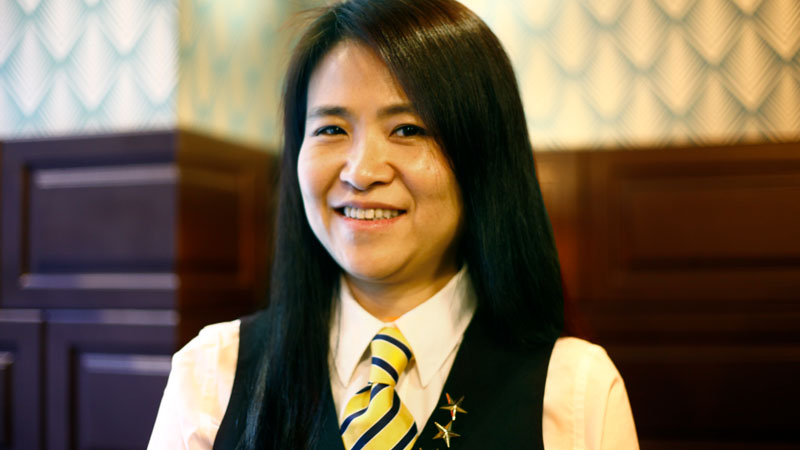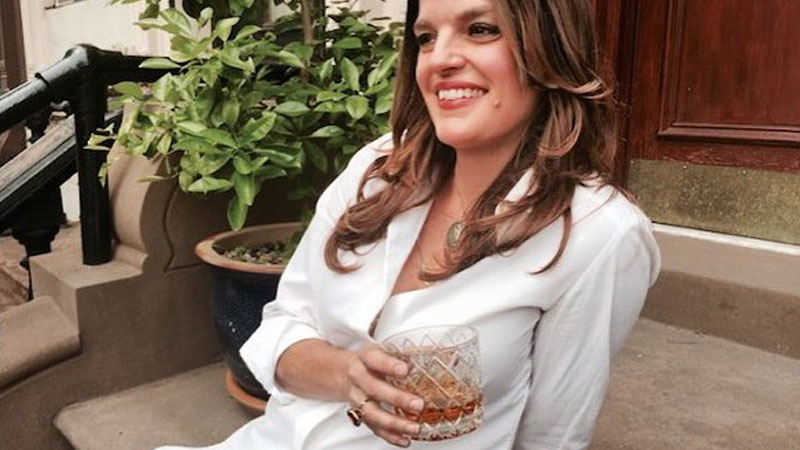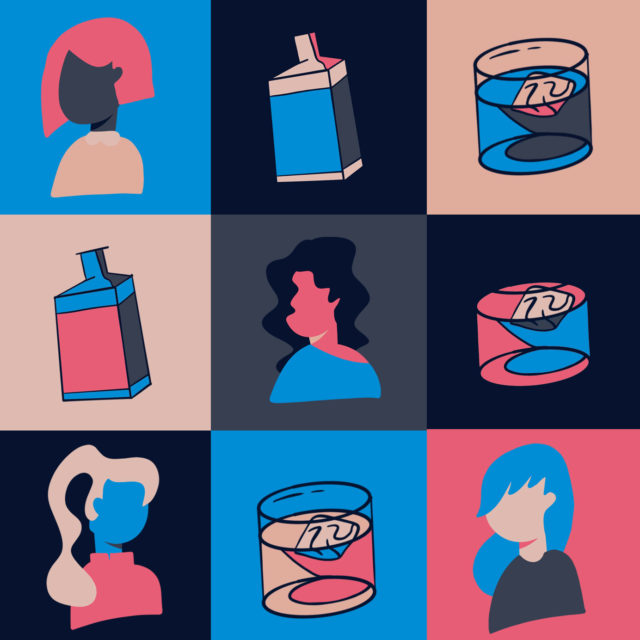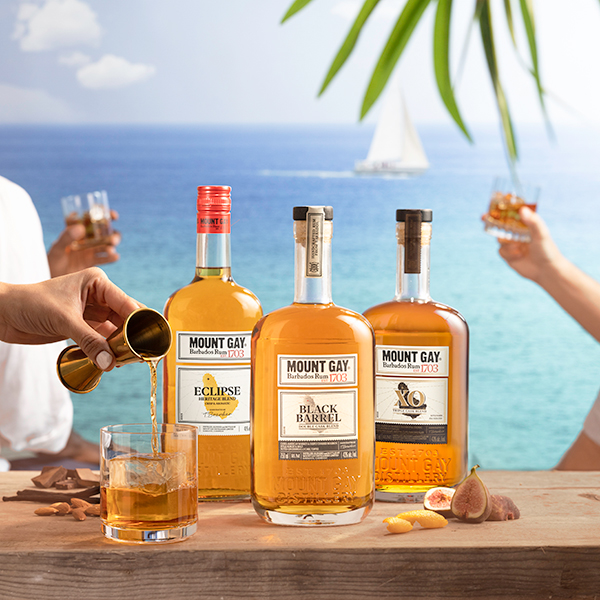Heather Greene needs another article about women in whiskey like she needs a raging case of shingles.
“‘Top Women You Should Know in This Industry.’ ‘Top Five Women Who Are Busting It Up.’ It drives me nuts,” says Greene, the author of “Whiskey Distilled: A Populist Guide to the Water of Life” and all-around whiskey expert. “Are women supposed to be inspired just because another woman is in the job? That doesn’t mean anything to me. I’m not interested in women for women’s sake.”
By highlighting the success of women in whiskey, tech, politics, or other male-dominated industries, Greene says, these breathless headlines risk devaluing individual achievements. Besides, Greene has devoted her professional life to rigorous study of whiskey and is currently writing her second book on the topic. Should she be featured next to a semi-professional Instagrammer just because they’re both women?
Greene’s arguments are valid. Still, it’s slightly awkward because I am, indeed, interviewing her for an article about women and whiskey — specifically, the chain of mentorship and influence among women in the industry.

My conversations with Greene and other women in the field reveal extremely modern truths. Instead of promoting tokens, or pretending gender doesn’t exist, we need to talk more about why having women and other minorities in visible leadership positions is important.
Recognizing the accomplishments of women and other minorities should be our first step, not our finish line. We need to explore the politics of being first, and the intense scrutiny that accompanies every freshman class, from distilleries to the U.S. Congress.
I can’t wait until the day when gender doesn’t matter. For now, it does.
An Extremely Short History of Women in Whiskey
Whiskey and all spirit distilling is male-dominated because, historically, the only paths in were via trades occupied by men.
“You might have worked your way up from a warehouseman to a mashman and so on,” Dr. Rachel Barrie, master blender at Glendronach, BenRiach, and Glenglassaugh, says. “There were very few if any women who got in. That route was closed.”
Only within the last few decades, as global appetite for single malt exploded and legacy brands were acquired by large multinationals, have there been more ways to get a job in whiskey.
“People are entering the industry who never would have had a chance before. You might have someone who has a history degree or a science background becoming a blender,” Barrie says. Her own career in chemistry put her on a path to become the first woman master blender of Scotch whisky.
Heather Greene first met Barrie 15 years ago while attending a sensory perception training at Glenmorangie. Barrie led the workshop, teaching the participants the science behind what they were smelling and tasting.
“I was in awe of her,” Greene says, “Not because she was a woman but because what came out of her mouth was fascinating. She made whiskey sound so enticing and wonderful.”
Barrie went on to mentor Greene, and the two found they had much in common beyond a shared passion for whiskey.
“Dr. Barrie sees the world as a poet does,” says Greene, who was a musician before making the leap to spirits. “The vocabulary she uses — I relate to that. I felt an affinity with her and the way she sees life. It’s not just whiskey; it’s beauty, it’s history, it’s how she views the world.”
Best Overall, or Best Woman?
When Greene talks about Barrie, the respect she has for her is clear. So is her stance that prioritizing Barrie’s gender over her work does a disservice to her accomplishments. When Barrie received an honorary doctorate from her alma mater, the BBC reported that she was “the first female master blender” to be so recognized.
Greene responded with her own article in the Daily Beast in October 2018. She clarified that Barrie was, in fact, the first master blender — male or female — to receive that honor from the University of Edinburgh. It was important to her to remove the metaphorical asterisk next to “female.”
“It bothers me,” she says. “The asterisk is crap. Let’s not reduce this woman’s career to ‘she’s achieved this among 50 percent of the population.’ She’s achieved this among 100 percent of the population. It’s not about who she is, it’s about what she accomplished.”
As Greene’s career in whiskey flourished, she became the director of whiskey education at the Flatiron Room in New York, where she briefly overlapped with a woman just starting behind the bar, Young Kim.
“I was wowed by Heather,” Kim says of Greene. “She was very knowledgeable and passionate. I wanted to be like that.” But, she is quick to add, “it wasn’t because Heather was a woman.”
As Greene did when talking about Barrie, Kim emphasizes that Greene’s gender is not the point. To express her admiration, Kim uses careful statements like, “she’s an individual person who worked very hard for her goal.”

It makes sense that these accomplished “individual people” would bristle at being perceived as most notable for their gender. Doubtless, they have butted up against instances of tokenism or have had people presume that their career achievements are attributable to the trendiness of diversity, not because they’re the best at what they do.
Such qualifiers are devastatingly pervasive. In May 2018, when tennis’s Roger Federer told WSJ. Magazine he believed Serena Williams was the sport’s best player, writer Jason Gay requested clarification: “I have to ask: Did Federer, considered by some to be the tennis GOAT (Greatest Of All Time), just suggest Serena was the GOAT? Did he mean GOAT on the women’s side — or overall?”
(Federer, who has 20 Grand Slams to Williams’ 23, did, in fact, mean that Serena is the GOAT. Full stop.)
It’s worth noting that Barrie, who entered the whiskey industry a decade or so before Greene and Kim, seems less bothered by that persistent asterisk. This might be because Barrie came of age at a time when the idea that she might have risen in the ranks because of her gender, rather than despite it, would have been laughable.
Exceptionalism
Kim tells a story about a previous position she held, working in a Michelin-starred sushi restaurant where the chefs only spoke Japanese. The specials had to be translated to her by other servers, which annoyed the hell out of her. What if she was missing some nuance? So she taught herself Japanese, and two months later was reading the specials herself.
“You do have to hit the ball harder,” Greene says. “I knew that I had to be better. It’s just part of the game.” It’s a sentiment shared by minorities everywhere.
“You have to be excellent,” Barrie says. “Women don’t tend to be invited to the golf club — there’s not so much of that now, but there used to be — so you have to be extremely hardworking because you can’t rely on that.” Barrie recalls doing distillery trials in the middle of the night, staying up three nights in a row to take samples off the stills. “It’s just who I am,” she explains. “I always push myself.”
To have all that dedication and grit reduced to a novelty headline — “Whiskey: Now for Girls!” — must be tremendously frustrating.
Golf And Unconscious Biases
Last year, Greene led a session at the Women’s Media Summit in Provincetown, Mass., teaching a roomful of female filmmakers some basic whiskey vocabulary.
“Getting a film financed sounds like a nightmare, and it’s so hard for women,” Greene says. “What I was doing was teaching women the language of whiskey so that when they’re in meetings with men, they have a voice. Even if they hate whiskey, they need to know how to talk about it, just like women had to know about sports and golf.”
Perhaps Greene wasn’t drawn to Barrie because she was a woman. Maybe she was drawn to her because she saw a fellow traveler, someone with a similarly outrageous work ethic and a voice that resonated with her. As she says, they have a shared way of looking at the world.
And perhaps this is the same way men are drawn to one another — not because of conscious sexism or primal maleness but because of a common vocabulary, parallel life experiences, and kindred way of being. Because of golf.
When someone in a leadership role sees a glimmer of themselves in a plucky up-and-comer or when a bright young thing recognizes that they have something in common with a person in a powerful position, it can impact her career in both subtle and explicit ways. It would be foolish to think that gender — or race or sexual orientation or any of the other innate traits that impact how humans are socialized — plays no role in the forging of relationships.
Young Kim went on to become the Flatiron Room’s beverage director and a respected whiskey expert in her own right. Kim tells me that she delights in subverting customers’ expectations. “I don’t look like a boss,” she says. “It’s not only because I’m a woman; I just don’t look like somebody who knows a lot.” What does a boss look like then? “The tall male staff look — I don’t know, higher in rank?”
But Kim is a boss. And because of her — and Greene, and Barrie — maybe some young women just starting out in the world of whiskey will think a boss looks exactly like someone like Young Kim.

